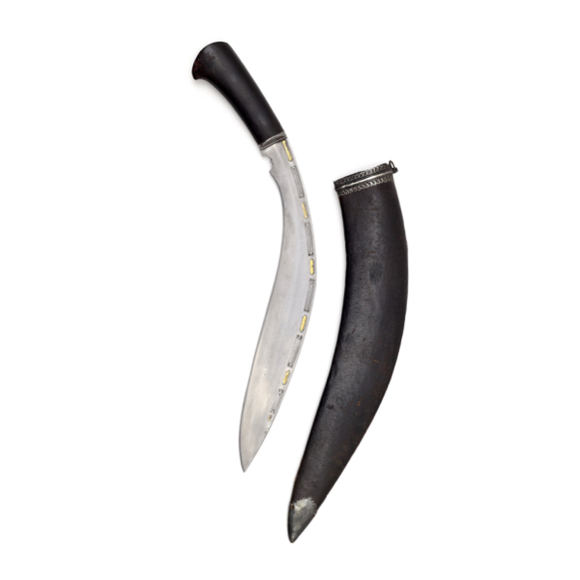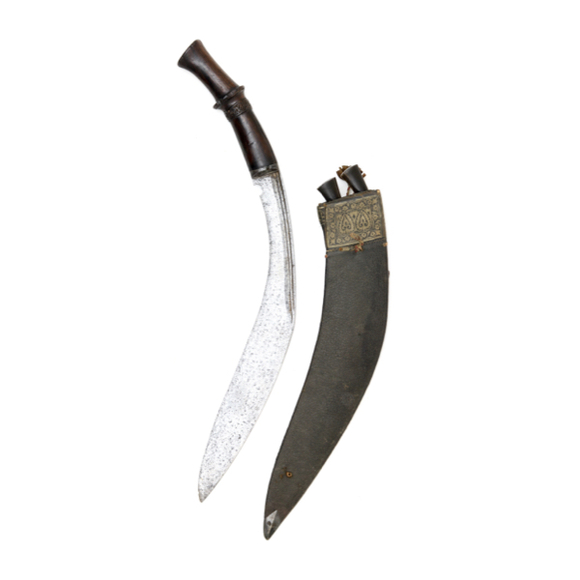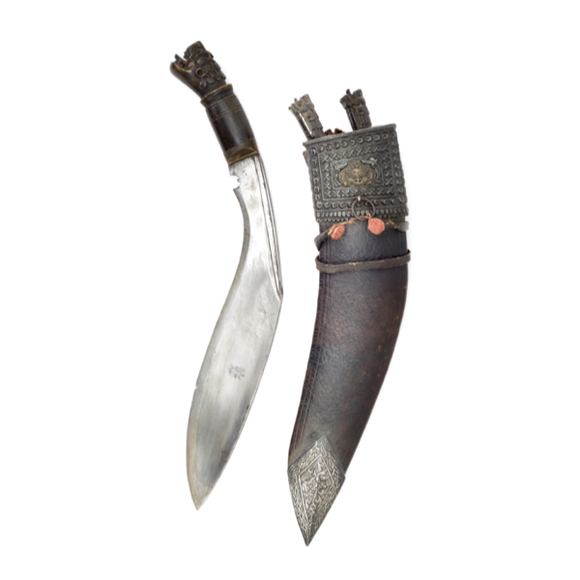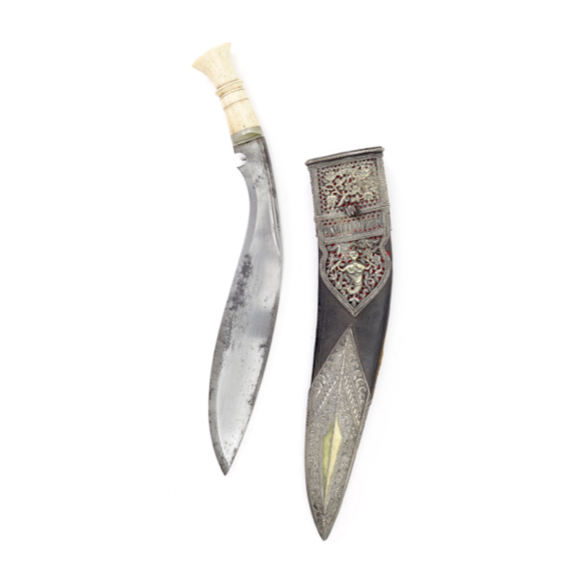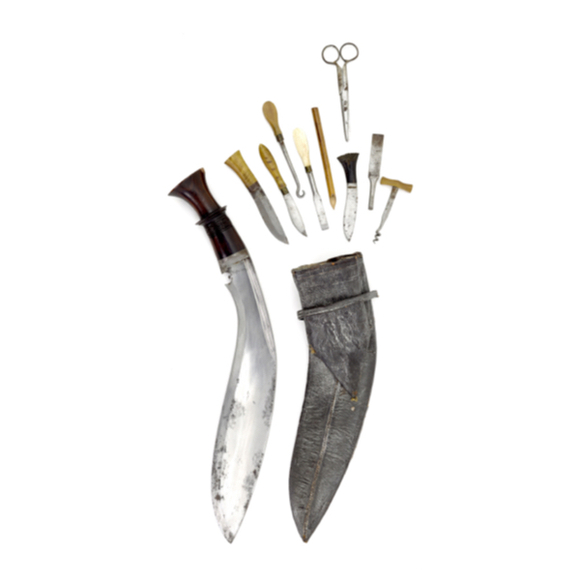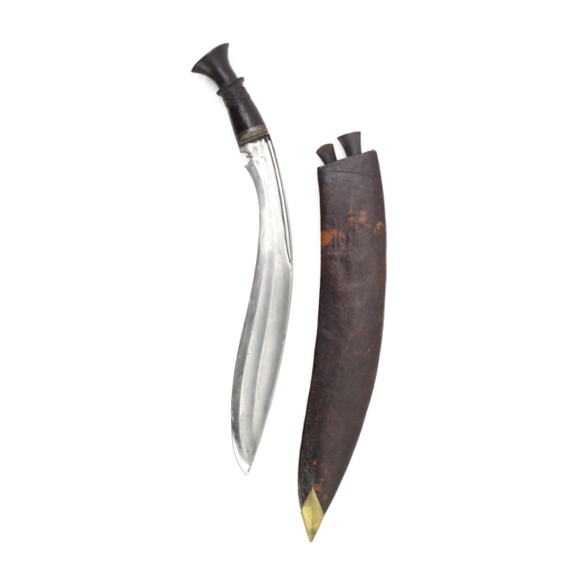Language: Nepali
Source: A 1931 dictionary
Description
Budhunē khukurī (बुधुने खुकुरी) is the name of a variation of khukri with a short, broad blade. It is a term that appears in the Comparative and etymological dictionary of the Nepali language of 1931.1

The fat-bellied budhunē khukri (bottom)
compared to a more conventionally proportioned khukri (top)
Bhojpure subtype
The term Bhojpure turns up in John Powell's unfinished manuscript on the khukurī. Powell notes that it is a term later in use for the earlier budhunē type.
Well known khukurī researcher Viking Kunwor, writing in 2020 adds:
"The Bhojpure (from a town (Bhojpur) in the mid hills of eastern Nepal) is one of several styles within the larger Budhume group (a term which is a based on a broad bellied fish spieces). The many tribes can be attributed to these weapons such as Limbus and Rais make only the deeper bladed Bhojpure, the Gurungs, Tamangs and Chhetris make the seerpat and the Newars are the artisans who are responsible for many of the finely carved wooden scabbards, intricate decoration and engraved blades." 2

The Bhojpure khukurī that was illustrated in Powel.
Purchased by Mandarin Mansion in 2020 and listed here.
Notes
1. Sir Ralph Lilley Turner; A comparative and etymological dictionary of the Nepali language. London: K. Paul, Trench, Trubner, 1931. The exact entry: "बुधुने budhune,adj. Squat, short (e.g. b˚ khukri a khukri with a short, broad blade);"
2. See Viking Kunwor; John Powell "JP" A legend & Kukri Godfather published online at kilatools.com.

